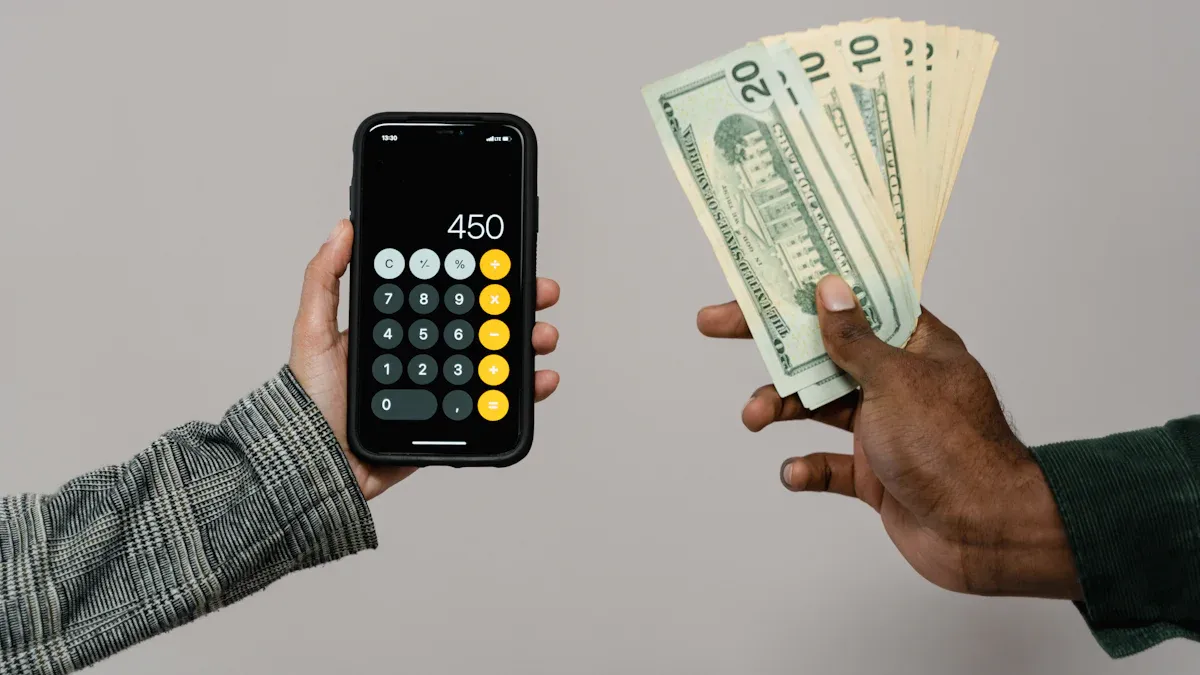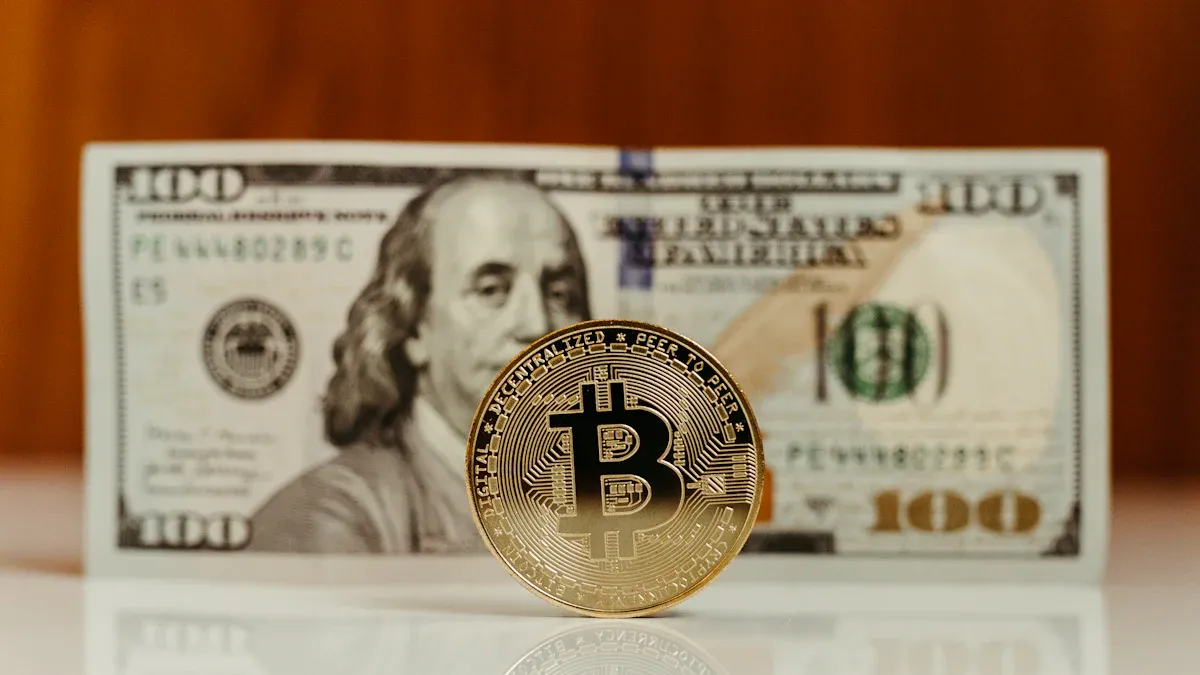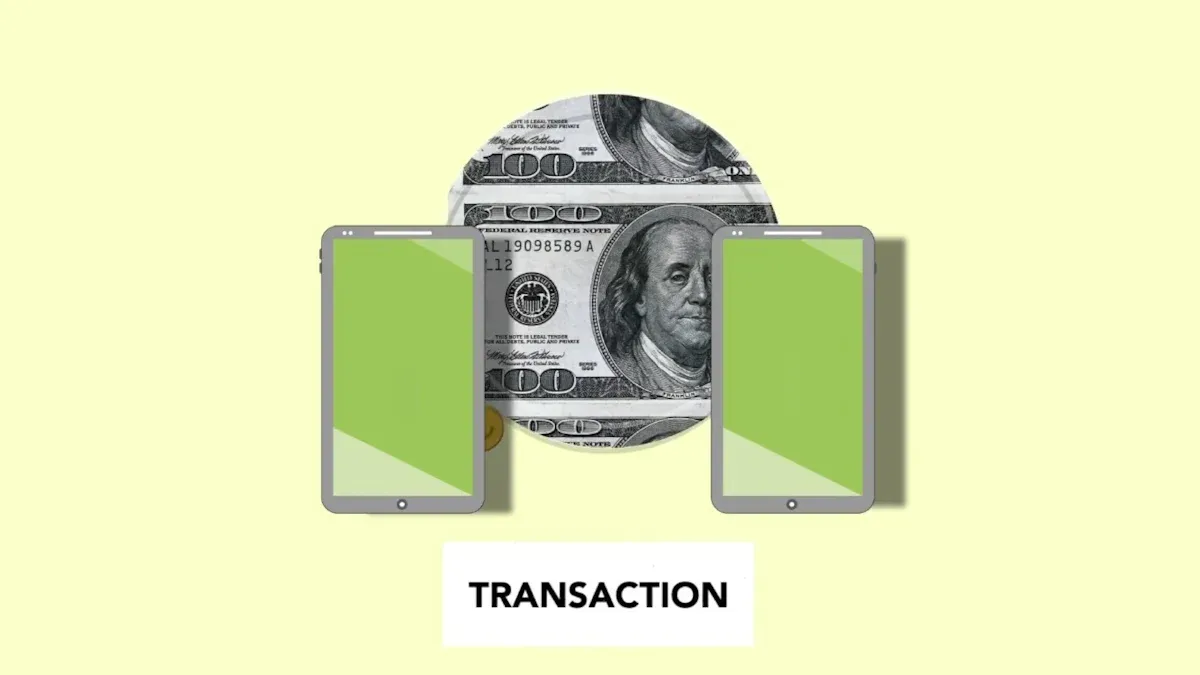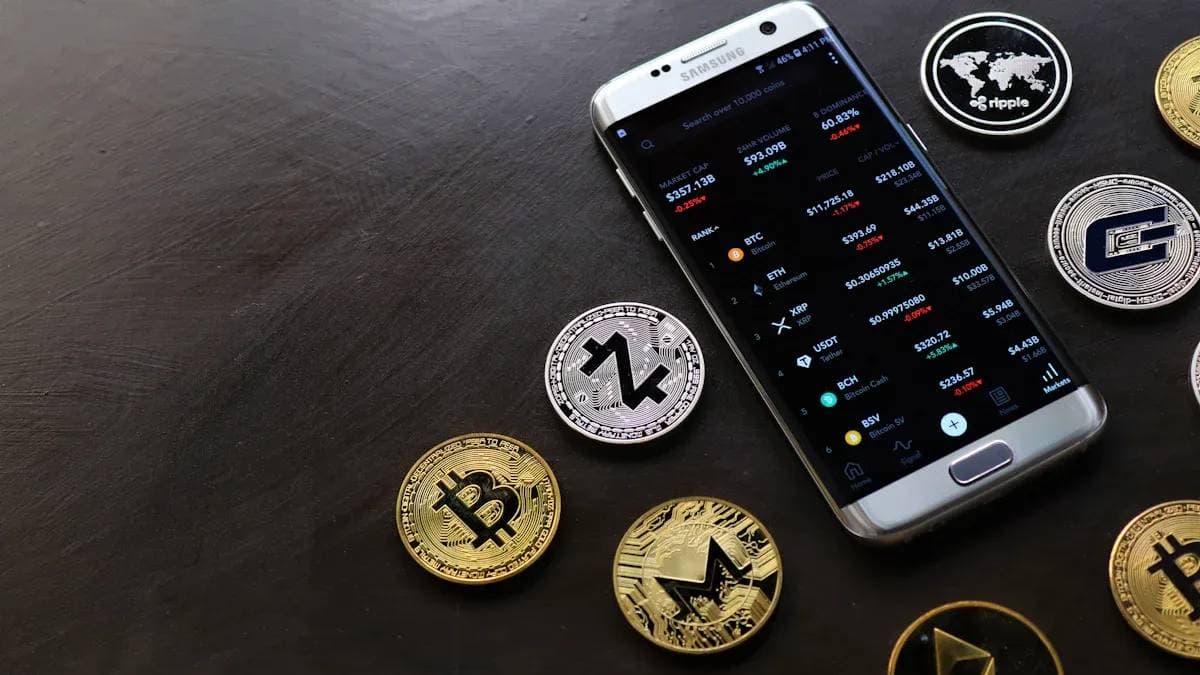- EasyCard
- Trade
- Help
- Announcement
- Academy
- SWIFT Code
- Iban Number
- Referral
- Customer Service
- Blog
- Creator
Stablecoin USDT Remittance Money-Saving Secrets: How to Effectively Reduce Transaction Costs

Image Source: pexels
Have you ever been troubled by high cross-border remittance handling fees and long waiting times?
Stablecoin USDT provides a fast, low-cost solution. It maintains a 1:1 peg with the USD and has stable value. As of mid-2025, stablecoin trading volume has exceeded $4 trillion, and its popularity is growing rapidly. This article will help you master the core methods of stablecoin (USDT) remittance cost control, ensuring every penny of your funds is well spent.
Key Points
- Understand USDT remittance costs, including platform handling fees, network fees, transaction premiums, and exchange rate differences.
- When purchasing USDT, choose low-premium merchants and payment methods to save fees.
- When transferring USDT, choose low-fee networks like TRC-20, but ensure the receiving address supports that network.
- When selling USDT, compare different buyers’ quotes, choose the highest exchange rate, and pay attention to transaction security.
- Use tools to query real-time fees and exchange rates to help you make more cost-saving decisions.
Full Analysis of USDT Remittance Cost Structure
To save money, you first need to know where the money is spent. USDT remittance costs are not a single item; they consist of visible “explicit costs” and invisible “hidden costs.” Understanding these costs is the first step to achieving stablecoin (USDT) remittance cost control.
Explicit Costs: Platform Handling Fees and Blockchain Network Fees
Explicit costs are the fees you pay directly and mainly include two parts:
-
Platform Handling Fees: When you buy or sell USDT on an exchange, the platform charges a certain percentage fee. This fee varies by platform and your trading volume. For example, Binance.US has a fee rate of 0.10%, while Coinbase Advanced’s taker fee is 0.25%.
-
Blockchain Network Fee (Gas Fee): When you transfer USDT on the blockchain, you need to pay a fee to the network. This fee is used to incentivize miners or validators to process your transaction. Fees vary greatly across different networks.
For example, transferring on Ethereum (ERC-20) network can cost up to $30-35. In contrast, using Tron (TRC-20) network, the fee is usually only $1-2. Choosing the right network is key to saving money.
Hidden Costs: Transaction Premiums and On/Off-Ramp Exchange Rate Differences
Hidden costs are not easily noticeable but still affect your total spending:
- Transaction Premium: When you buy USDT with fiat currency through C2C (Customer-to-Customer), the price you pay is usually slightly higher than the real-time USD exchange rate. This difference is the “premium,” which is the profit for the merchant’s service.
- On/Off-Ramp Exchange Rate Difference: Similarly, when you sell USDT back to fiat currency, the exchange rate you receive may also be slightly lower than the market rate. The gap between the buy and sell prices constitutes your hidden transaction cost.
Fee Map: A Diagram to Understand All Cost Points in the Process
Now, let’s connect all the cost points in the entire remittance process to form a clear “fee map.”
- Purchase USDT (On-Ramp): Main costs are
platform handling feeandtransaction premium. - Transfer USDT: Main cost is
blockchain network fee (Gas Fee). - Exchange** to Fiat (Off-Ramp)**: Main costs are
platform handling feeandoff-ramp exchange rate difference.
The diagram below visually shows the trading fee rates of different exchanges to help you choose a lower-cost platform.
Overall, the total cost of a complete on-chain stablecoin remittance is approximately between $0.40 and $15.25, while the average cost of traditional wire transfer is about $31. By optimizing every link, you can save over 75% in fees.
Three Core Strategies for Stablecoin (USDT) Remittance Cost Control
After understanding the cost structure, you will now learn how to systematically tackle each cost point. Achieving stablecoin (USDT) remittance cost control is not complicated; the key is to follow three core strategies. You can think of them as a complete money-saving process: “Smart Buying,” “Economical Transfer,” and “Cost-Effective Selling.” As long as you master and execute these three steps well, you can minimize overall transaction costs.
Strategy 1: Control Purchase Costs from the Source
A good start is half the battle. Your first step is to pay as little as possible when purchasing USDT. This means you need to focus on transaction premiums and choose the lowest-cost purchase channel. Whether buying directly from merchants through C2C platforms or trading with fiat on exchanges, different choices lead to different initial costs. We will discuss in detail later how to screen low-premium merchants to give you an advantage from the source.
Strategy 2: Carefully Choose the Transfer Network
This is the most critical part of the entire stablecoin (USDT) remittance cost control. USDT can be transferred on multiple blockchain networks, and the fees (Gas Fee) and speeds vary greatly across networks.
Choosing the right network is key to saving money. For example, choosing networks like TRON (TRC-20) usually offers faster speeds and lower fees. But please remember that the sender and receiver’s wallet addresses must support and select the same network; otherwise, funds may be permanently lost.
We will provide you with a clear comparison chart in the following sections to help you make the most economical choice based on your remittance amount and time requirements.
Strategy 3: Optimize Timing for the Best Exchange
After the funds successfully arrive, the final step is to exchange USDT for the target fiat currency. Your goal is to get the highest possible exchange rate and reduce losses from the “off-ramp exchange rate difference.” The characteristic of USDT pegged to the USD saves you from currency exchange fees in traditional remittances, but you still need to find the highest-bidding buyer in the C2C market. This requires some skills and patience to ensure every penny is worth it. At the same time, safe off-ramping and risk prevention are the top priorities in this step.
Detailed Strategy 1: How to Buy USDT at Low Cost

Image Source: pexels
Purchasing USDT is the first step in the entire remittance process and the starting point of your money-saving journey. Your goal is very clear: exchange the least fiat for the most USDT. This requires you to master purchasing techniques across different channels and learn to identify key cost indicators.
C2C Trading: Tips for Screening Low-Premium Merchants
C2C (Customer-to-Customer) trading allows you to buy USDT directly from other users. On platforms like Biyapay that support C2C trading, you can find many merchants offering services. To screen reliable and fairly priced merchants, you need to focus on the following:
- Completion Rate and Volume: Choose merchants with high completion rates (usually above 95%) and large historical trading volumes, as this indicates they are more professional and reliable.
- User Reviews: Check feedback left by other buyers to understand the merchant’s service quality and response speed.
- Price Comparison: Don’t just look at the first one; compare quotes from several merchants and choose the lowest price.
Exchange Buying: Fee Comparison of Different Payment Methods
If you choose to buy USDT directly with fiat on a centralized exchange, different payment methods produce vastly different fees. Credit cards are convenient and fast but cost the most; bank transfers are relatively economical.
The table below clearly compares the fee structures of different payment methods:
| Payment Method | Fee Type | Fee Range | Notes |
|---|---|---|---|
| Credit Card (Visa/Mastercard) | Processing Fee | 2-4% | Fast, but highest overall cost |
| Bank Transfer | Platform Handling Fee | Lower | Slower, suitable for non-urgent funds |
| P2P/C2C Market | Transaction Premium | Floating | Flexible fees, one of the lowest-cost channels |
Choosing which method depends on your trade-off between speed and cost.
Key Indicator: Learn to Understand USDT Premium Rate
No matter which method you use to purchase, you must understand the core indicator of “premium rate.” It directly reflects your purchase cost.
The premium rate refers to the percentage difference between the price you pay for USDT and the real-time USD exchange rate. The calculation formula is:
(C2C purchase unit price / real-time USD exchange rate - 1) * 100%.
For example, if the real-time exchange rate is 1 USD to 7.25 RMB, and the merchant quotes 7.30 RMB, the premium rate is about 0.69%. Your goal is to find merchants or timing with the lowest possible premium rate to purchase and control costs from the source.
Detailed Strategy 2: Choose the Optimal Transfer Network

Image Source: pexels
After successfully purchasing USDT, the next step is transfer. This is the most critical part of the money-saving strategy, as different blockchain networks have vastly different transfer fees (Gas Fee) and speeds. Making a wise choice can save you up to 95% in fees.
Important Reminder: Please confirm repeatedly before transferring! The transfer network you choose must be exactly the same as the network supported by the recipient’s address. For example, USDT sent from the TRC-20 network can only be sent to a TRC-20 address. Once the wrong network is selected, your funds may be permanently lost.
Mainstream Public Chain Cost and Speed Comparison
To help you make decisions intuitively, we have compiled core data for several mainstream public chain networks. You can choose the optimal solution from the table below based on your remittance amount, urgency, and the network supported by the recipient. Platforms with comprehensive functions like Biyapay usually support multiple network options, providing you with flexible cost-saving space.
| Network Name | Average Transfer Fee (USD) | Average Arrival Speed | Support Breadth | Applicable Scenarios |
|---|---|---|---|---|
| TRC-20 (TRON) | $1.00 - $2.00 | About 1-3 minutes | Very Wide | Small-amount, high-frequency remittances, daily use |
| ERC-20 (Ethereum) | $5.00 - $25.00+ | About 1-10 minutes | Widest | Large-amount transfers, prioritizing highest security |
| BEP-20 (BSC) | $0.10 - $0.50 | About 1-2 minutes | Wide | Medium to small-amount transfers, pursuing cost-effectiveness |
| Polygon (Matic) | < $0.10 | About 1 minute | Relatively Wide | Extremely low-cost transfers, with speed requirements |
| Solana (SPL) | < $0.01 | About 3-5 seconds | Growing Rapidly | Pursuing ultimate speed and lowest cost |
TRC-20: First Choice for Small-Amount High-Frequency Remittances
If you need small-amount or frequent transfers, the TRC-20 network is your best choice.
- Extremely Low Cost: TRC-20 transfer fees are usually stable between $1 and $2. This is due to its ability to process thousands of transactions per second, effectively avoiding network congestion.
- Fast Speed: Transaction confirmation time is generally within 3 minutes, meeting most daily remittance timing needs.
- Wide Support: Almost all mainstream exchanges and wallets, such as Trust Wallet, TronLink, etc., support the TRC-20 network, making transfers and receipts very convenient.
Overall, TRC-20 achieves an excellent balance between cost, speed, and ease of use.
ERC-20: Highest Security but Expensive
ERC-20 is USDT based on the Ethereum network. As the oldest and most mature smart contract platform, Ethereum’s security is recognized as the highest among all public chains.
The Ethereum network uses a Proof-of-Stake consensus mechanism and has a large decentralized node network, giving it extremely high security and attack resistance.
However, this security comes at a price. The Ethereum network can only process about 15 transactions per second and is highly prone to congestion during peak periods, causing Gas Fees to skyrocket. Its fees can range from a few dollars to tens of dollars, making it the most expensive among all networks.
Therefore, only consider using the ERC-20 network when conducting large transfers of hundreds of thousands or even millions of USD and prioritizing security.
BSC, Polygon, Solana: Emerging High Cost-Effective Choices
In recent years, some emerging public chains have become “rising stars” in USDT transfers due to their excellent performance, providing you with more high cost-effective choices.
- BSC (BEP-20): Binance Smart Chain is a network designed for high-speed transactions. Its fees are usually below $0.50, and the speed is also fast, making it a strong competitor to TRC-20.
- Polygon: This is a network created to scale Ethereum; it inherits Ethereum’s security while having extremely low transaction costs, usually just a few cents, with fast confirmation times.
- Solana: If you pursue ultimate speed and cost, Solana is currently the optimal solution. Its transfer fee is less than $0.01, and transaction confirmation is almost instant (completed within 3 to 5 seconds), very suitable for small-amount, instant payment scenarios.
In summary, when choosing a transfer network, you need to weigh your core needs. There is no absolute “best,” only the “optimal” solution that suits you best.
Detailed Strategy 3: How to Exchange Fiat at High Rates
You have successfully transferred USDT to the receiving address; now enter the final step: exchange it for the fiat currency you need. The goal of this step is clear: exchange your USDT for as much cash as possible. This requires you to master some skills to lock in high prices in the C2C market and always pay attention to security risks during the off-ramp process.
C2C Selling: Tips to Lock in High-Rate Buyers
C2C (Customer-to-Customer) trading is the best way for you to sell USDT directly to other users. On platforms like Biyapay that support C2C trading, you can see many buyers seeking USDT. To find the highest-bidding and most reliable buyer, you need to focus on the following:
- Compare Quotes: Don’t accept the first quote you see. Spend a few minutes browsing the list, compare different buyers’ bids, and choose the one with the best exchange rate.
- Check Buyer Data: Prioritize buyers with high completion rates (e.g., above 95%) and large historical trading volumes. This usually means they are more professional and pay more promptly.
- Read User Reviews: Through feedback from other sellers, you can understand the buyer’s reputation and trading habits.
Fee Rates and Arrival Speeds of Different Off-Ramp Channels
Different off-ramp amounts and timing requirements determine which channel you should choose. Small-amount fast withdrawals and large-amount cost-sensitive withdrawals have completely different optimal paths.
| Scenario | Best Method | Estimated Time (ETA) | Cost Signal |
|---|---|---|---|
| ≤ $2,000, Fast Demand | P2P + Instant Local Payment | Minutes to Hours | Medium (Spread) |
| $5,000–$20,000, Cost-Sensitive | Exchange (CEX) + Local Payment | Same Day to T+2 | Low to Medium |
| ≥ $25,000, Strict Requirements | Licensed OTC | T+0 to T+1 | Medium (Clear Fees) |
In simple terms, for withdrawals below $2,000 with speed priority, P2P is the best choice. For medium amounts, withdrawing to a bank account through an exchange is more advantageous in cost. For large amounts, compliant OTC platforms provide the best security and certainty.
Security Tips: Prevent Account Freezing Risks During Off-Ramp
Security is always the top priority. In C2C transactions, you may unknowingly receive funds from illegitimate sources, which could lead to your bank account being frozen.
Banks have a legal obligation to monitor suspicious transactions to comply with anti-money laundering (AML) regulations. If a transaction triggers the system’s danger signals, such as funds coming from a flagged account, the bank may freeze your account and report to authorities.
To reduce risks, you need to be wary of the following high-risk behaviors:
- Suspicious Counterparty: Avoid trading with buyers with few transaction records and poor user reviews.
- Abnormal Trading Behavior: Frequent large transactions with multiple different strangers in a short period can easily attract bank attention.
- Sensitive Remarks: Never fill in words like “USDT” or “cryptocurrency” in transfer remarks.
Choosing reputable counterparties and platforms and maintaining good trading habits are key to protecting your asset security.
Practical Exercises and Essential Tool Recommendations
Theoretical knowledge needs practice to consolidate. Now, you will learn how to apply money-saving strategies to actual operations through a specific case and some powerful tools, making every remittance clear and efficient.
Case: Best Path Demonstration for Remitting 1000 USDT
Assume you need to remit 1000 USDT. Following our previous strategies, your best path is as follows:
- Low-Cost Purchase: You can go to the C2C market on a platform like Biyapay. By comparing different merchants’ quotes, completion rates, and user reviews, you find a reliable merchant with the lowest premium and complete the purchase of 1000 USDT.
- Economical Transfer: For an amount of 1000 USDT, TRC-20 or BEP-20 networks offer the best cost-effectiveness. On Biyapay’s withdrawal page, you select the BEP-20 network and enter the receiving address. The transfer fee is expected to be only $0.10 - $0.50, arriving within minutes.
- High-Rate Exchange: After the funds arrive, you sell USDT in the local C2C market. You again use screening techniques to find the highest-bidding and most reputable buyer, exchanging USDT for local fiat currency.
Through this process, you control the total cost of purchase, transfer, and exchange at an extremely low level, far below traditional wire transfers.
Toolbox: Real-Time Gas Fee Query Websites
Checking real-time network fees (Gas Fee) before transfer is a good habit. This can help you avoid peak fees during network congestion. You can use the following websites to get real-time data:
- Gasfees.org: This website is very comprehensive, providing real-time Gas fee data for Ethereum, BSC, and over 100 other blockchains.
- Blocknative Gas Estimator: It focuses on the Ethereum network, providing accurate Gas fee predictions to help you seize the best transfer timing.
Toolbox: Multi-Platform Exchange Rate Aggregator
When buying and selling USDT in the C2C market, information is money. A good exchange rate aggregator lets you see at a glance which platform has the best price.
P2P.Army is a powerful tool. It aggregates USDT quotes from multiple mainstream P2P exchanges (such as Binance P2P, OKX P2P, Huobi P2P). You can use it to compare real-time exchange rates across platforms and even compare them with bank rates to ensure you always trade at the optimal price.
Using these tools, you can precisely control the cost of every transaction like a professional.
You have now mastered the ultimate secrets of stablecoin (USDT) remittance cost control. Please remember the following core points:
- For small-amount remittances, prefer the TRC-20 network for low cost and fast speed.
- For medium to large transfers, consider BEP-20 or Polygon for ultimate cost-effectiveness.
- In C2C transactions, always compare merchant quotes and reputations.
USDT, as a modern remittance tool, provides you with great convenience. I hope you flexibly apply these techniques in practice.
Security First: Your asset security is crucial. Please always choose reputable platforms, enable multi-factor authentication (MFA) for your account, and repeatedly verify the receiving address before transfer to avoid unnecessary losses.
FAQ
Is the value of USDT always equal to 1 USD?
In theory, USDT is pegged 1:1 to the USD. But in actual trading, market supply and demand can cause slight price fluctuations, usually between $0.99 and $1.01.
You can treat this slight fluctuation as a normal market phenomenon. In most cases, its value is very stable.
What if I send USDT to the wrong network?
If you send USDT to a mismatched network address, such as sending TRC-20 USDT to an ERC-20 address, your funds will likely be permanently lost and unrecoverable.
Before transferring, you must repeatedly confirm that the receiving address and the transfer network you choose are exactly the same.
How to ensure the security of C2C transactions?
When conducting C2C transactions, prioritize certified merchants with large trading volumes and high positive ratings. During the transaction, use the platform’s internal chat system for communication and keep all transaction records.
Never fill in sensitive words like “USDT” in transfer remarks to reduce bank account risks.
*This article is provided for general information purposes and does not constitute legal, tax or other professional advice from BiyaPay or its subsidiaries and its affiliates, and it is not intended as a substitute for obtaining advice from a financial advisor or any other professional.
We make no representations, warranties or warranties, express or implied, as to the accuracy, completeness or timeliness of the contents of this publication.




Contact Us
Company and Team
BiyaPay Products
Customer Services
BIYA GLOBAL LLC is a licensed entity registered with the U.S. Securities and Exchange Commission (SEC No.: 802-127417); a certified member of the Financial Industry Regulatory Authority (FINRA) (Central Registration Depository CRD No.: 325027); regulated by the Financial Industry Regulatory Authority (FINRA) and the U.S. Securities and Exchange Commission (SEC).
BIYA GLOBAL LLC is registered with the Financial Crimes Enforcement Network (FinCEN), an agency under the U.S. Department of the Treasury, as a Money Services Business (MSB), with registration number 31000218637349, and regulated by the Financial Crimes Enforcement Network (FinCEN).
BIYA GLOBAL LIMITED is a registered Financial Service Provider (FSP) in New Zealand, with registration number FSP1007221, and is also a registered member of the Financial Services Complaints Limited (FSCL), an independent dispute resolution scheme in New Zealand.


















